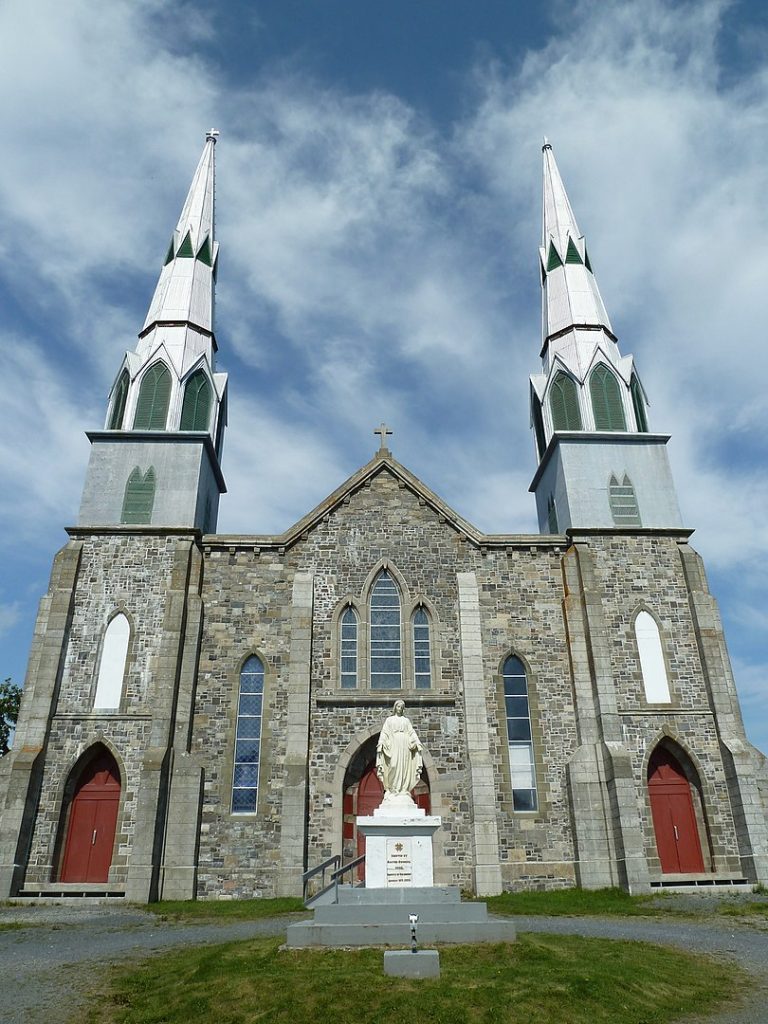Architecture – Canadian Architecture – Gothic Revival – New Brunswick
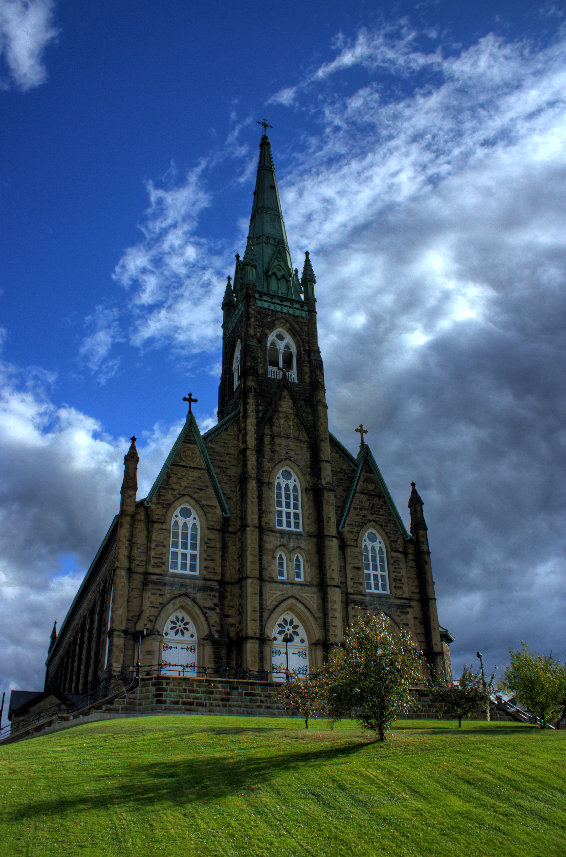
St Michael’s Basilica
Miramichi, 1921
Having started our exploration of Gothic Revival architecture in Ottawa, Toronto, and Ontario, we then made our way into the Altantic provinces: Prince Edward Island, Newfoundland & Labrador, Nova Scotia. Today we conclude our virtual exploration of the Altantic provinces with New Brunswick before making our way to Quebec then the Western provinces.
Gothic Revival architecture in New Brunswick, like elsewhere in Canada, became popular in the mid-to-late 19th century, around the 1830s to 1870s. This style drew from medieval European architecture, embracing ornate details, pointed arches, and a sense of verticality. The Gothic Revival style’s dramatic and romantic elements reflected a shift toward idealism and a fascination with history, especially in religious and public buildings.
Key features of Gothic Revival architecture in New Brunswick include:
- Pointed Arches and Windows: Pointed, lancet-shaped windows and arches are hallmarks of this style. Churches, in particular, feature large stained-glass windows with intricate tracery, which became a defining element in the province.
- Steeply Pitched Roofs and Tall Spires: Gothic Revival buildings often have steep roofs and spires or pinnacles that draw the eye upward, giving a sense of grandeur and elevation. This is particularly prominent in church architecture, where tall steeples make a dramatic statement against the landscape.
- Buttresses and Decorative Facades: Many buildings include decorative or structural buttresses to emphasize stability and ornamentation, even if not strictly necessary. In New Brunswick, you can find examples of this in stone churches and civic buildings.
- Ornamentation and Finials: Gothic Revival architecture often includes elaborate finials, carved stonework, and other decorative details, drawing from medieval Gothic cathedrals. Even smaller residences and public buildings may include Gothic details like arched windows and wooden trim (known as “gingerbread”) around doors and roofs.
- Wood and Stone Construction: While the style originally used stone, New Brunswick builders frequently adapted Gothic Revival to the local timber resources, creating “Carpenter Gothic” homes and churches. This wooden variant retains the pointed arches, intricate woodwork, and decorative flair but is adapted to the timber frame and clapboard siding commonly found in the region.
Notre Dame de Lourdes Church
Notre Dame de Lourdes Parish, 1910
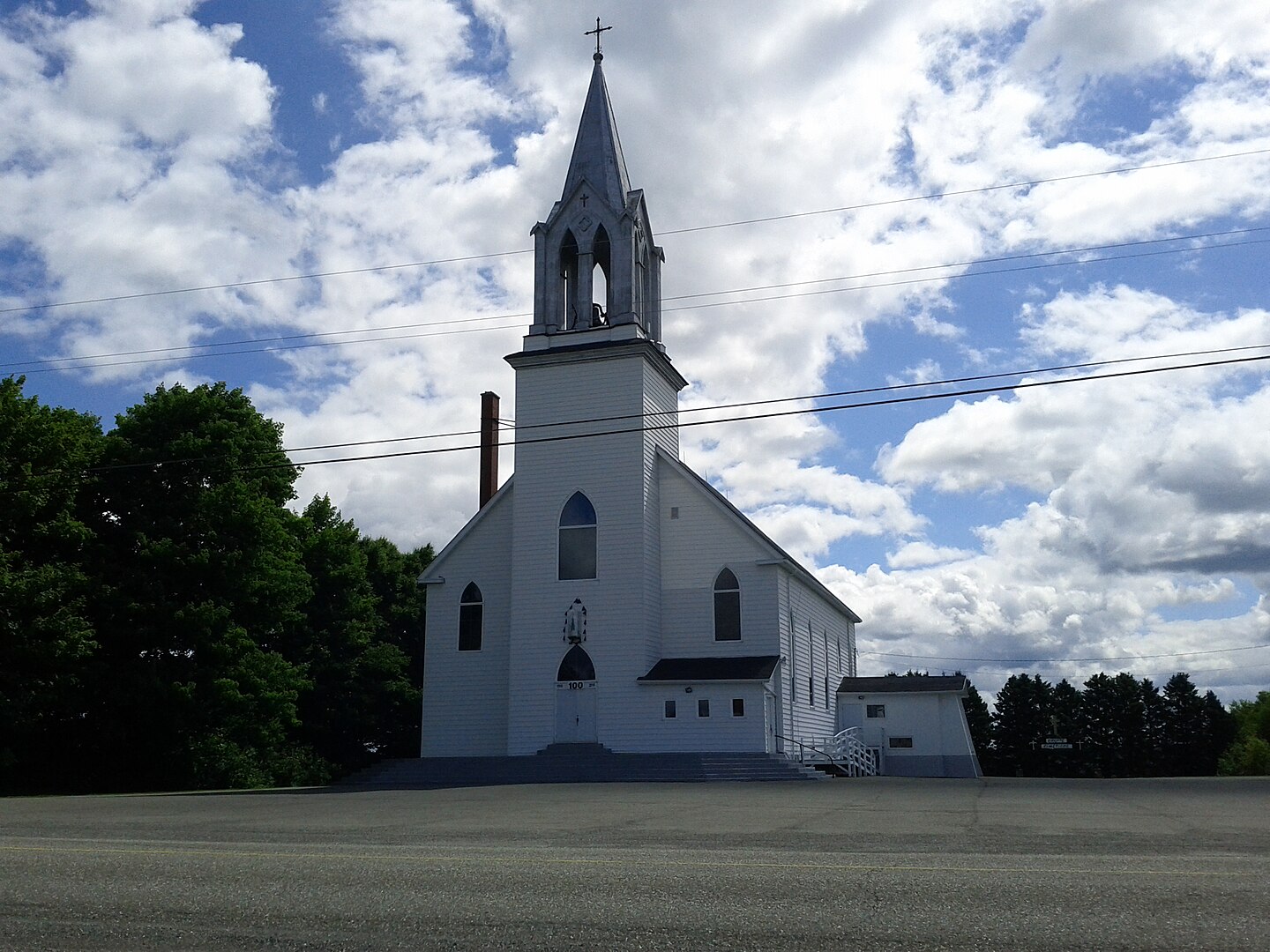
Alcorn Manor
Moncton, 1908
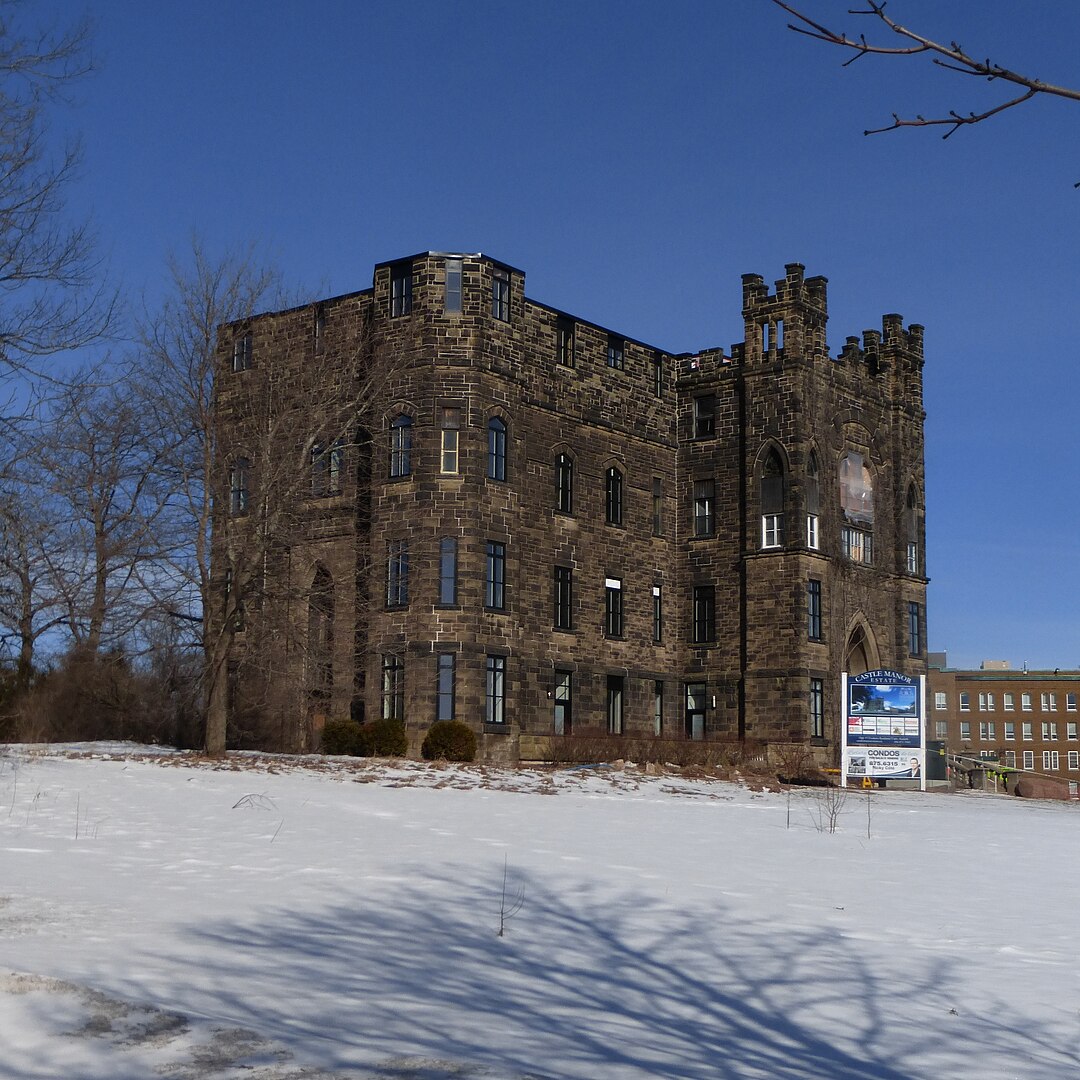
St Bernard’s Catholic Church
Moncton, 1891
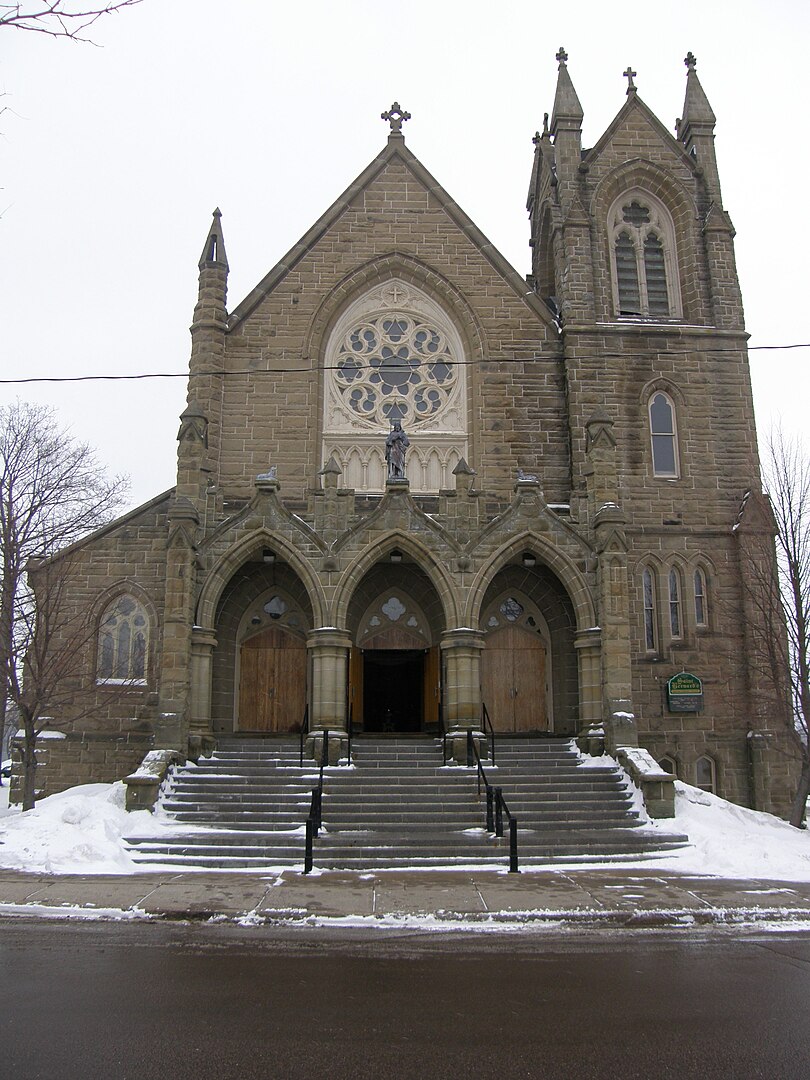
Sacred Heart Cathedral
Bathurst, 1886
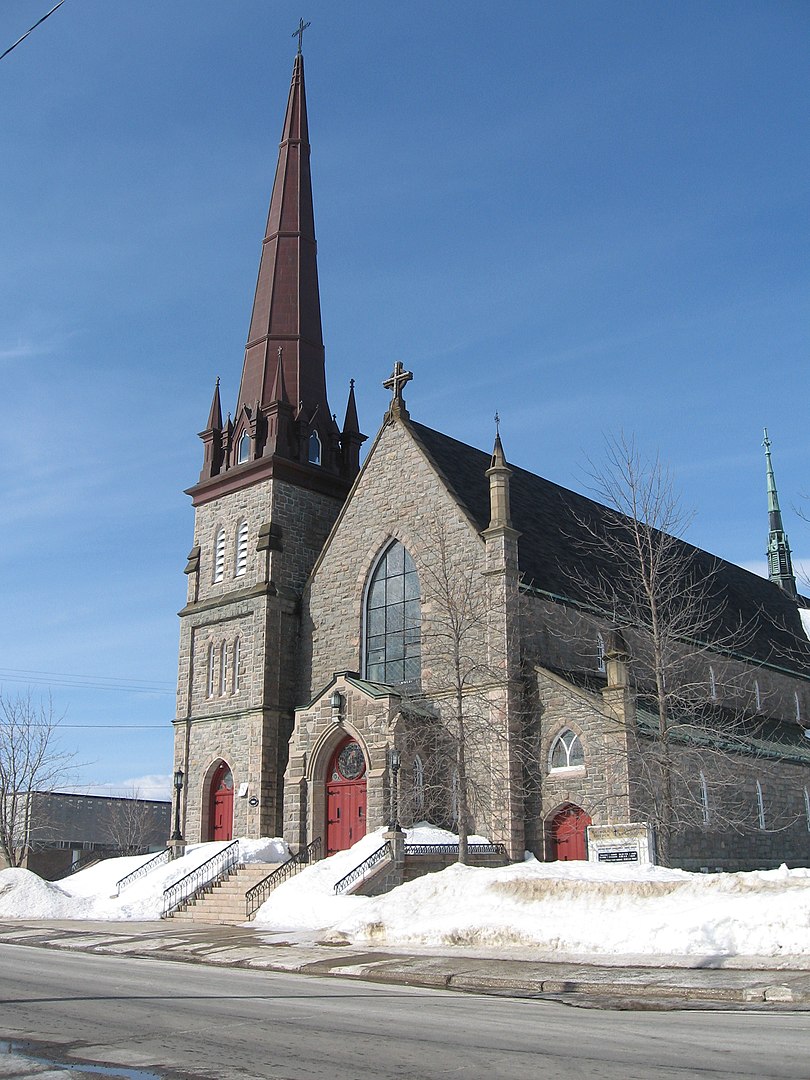
Sainte Therese Davila Church
Robertville, 1884
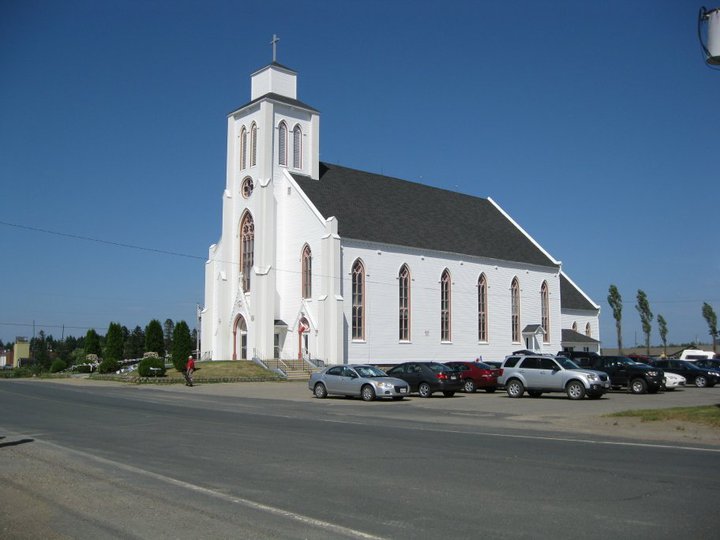
Anglican Church
Saint John, 1880
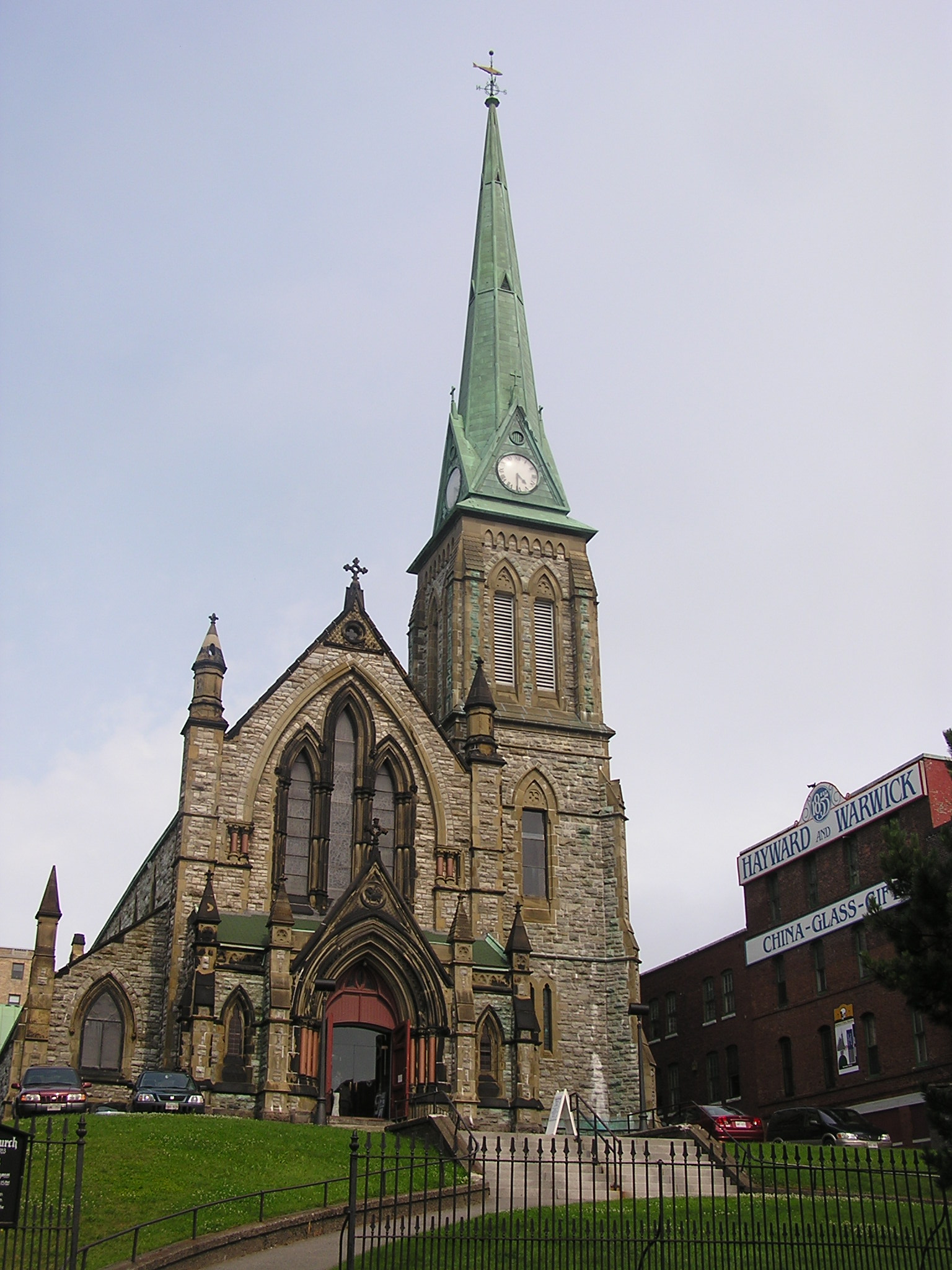
Saint Thomas de Memramcook Church
Memramcook, 1855
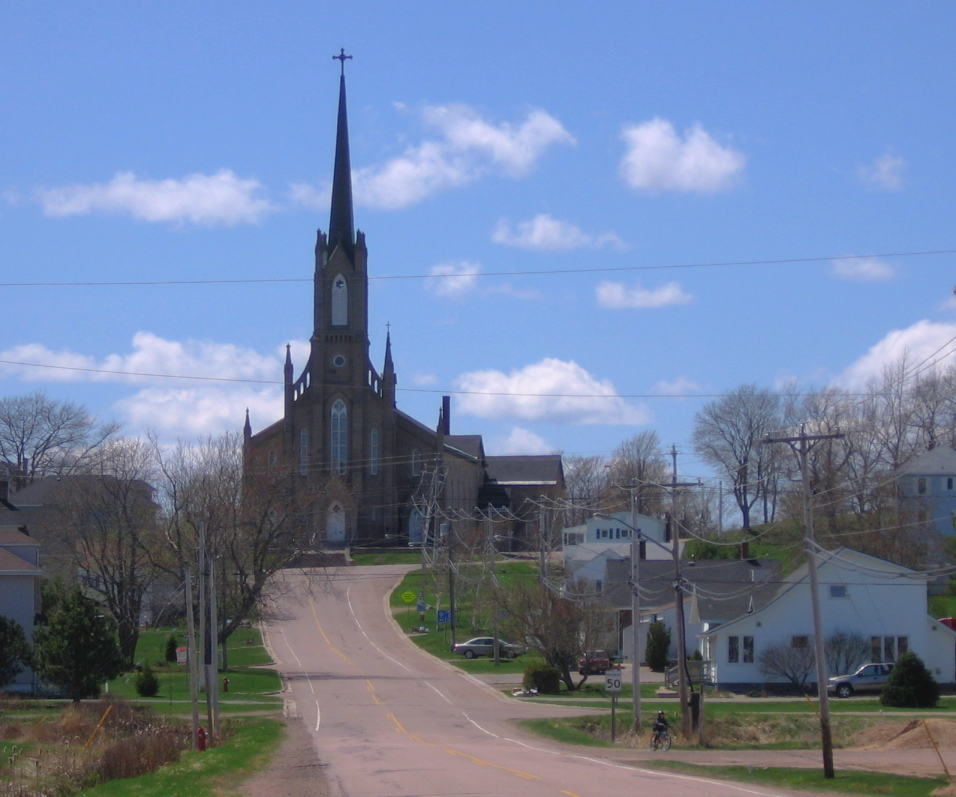
Cathedral of the Immaculate Conception
Saint John, 1853
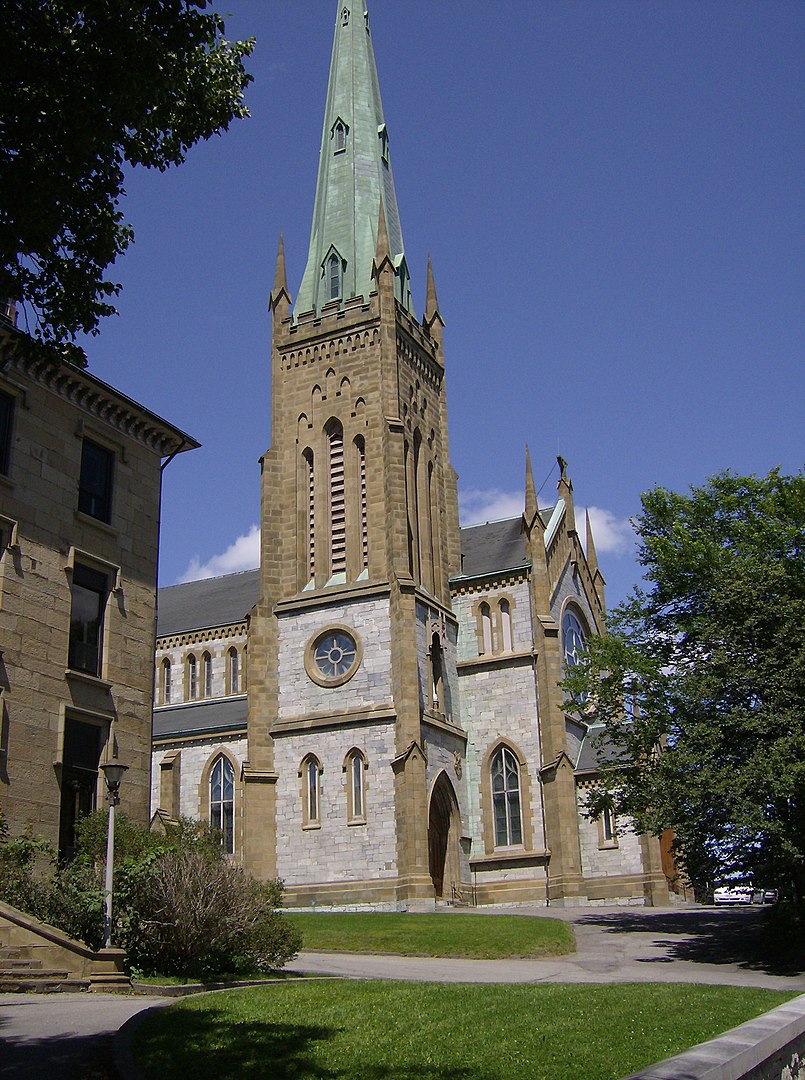
Christ Church Cathedral
Frederickton, 1853
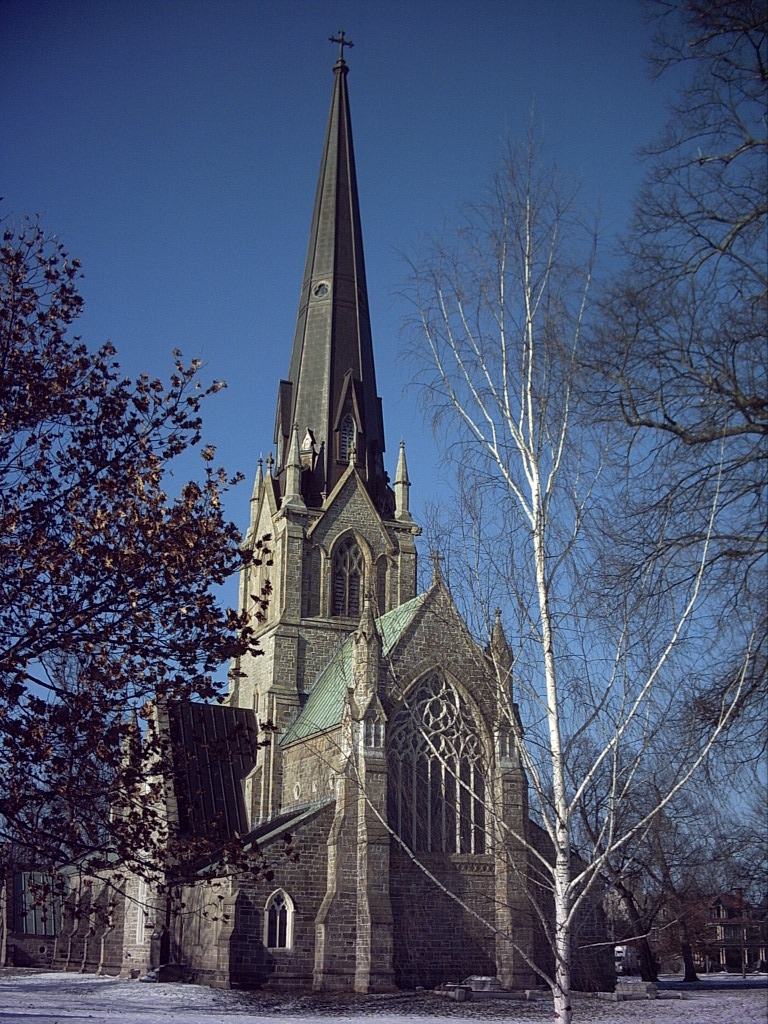
St John’s Anglican Church
Saint-John, 1826
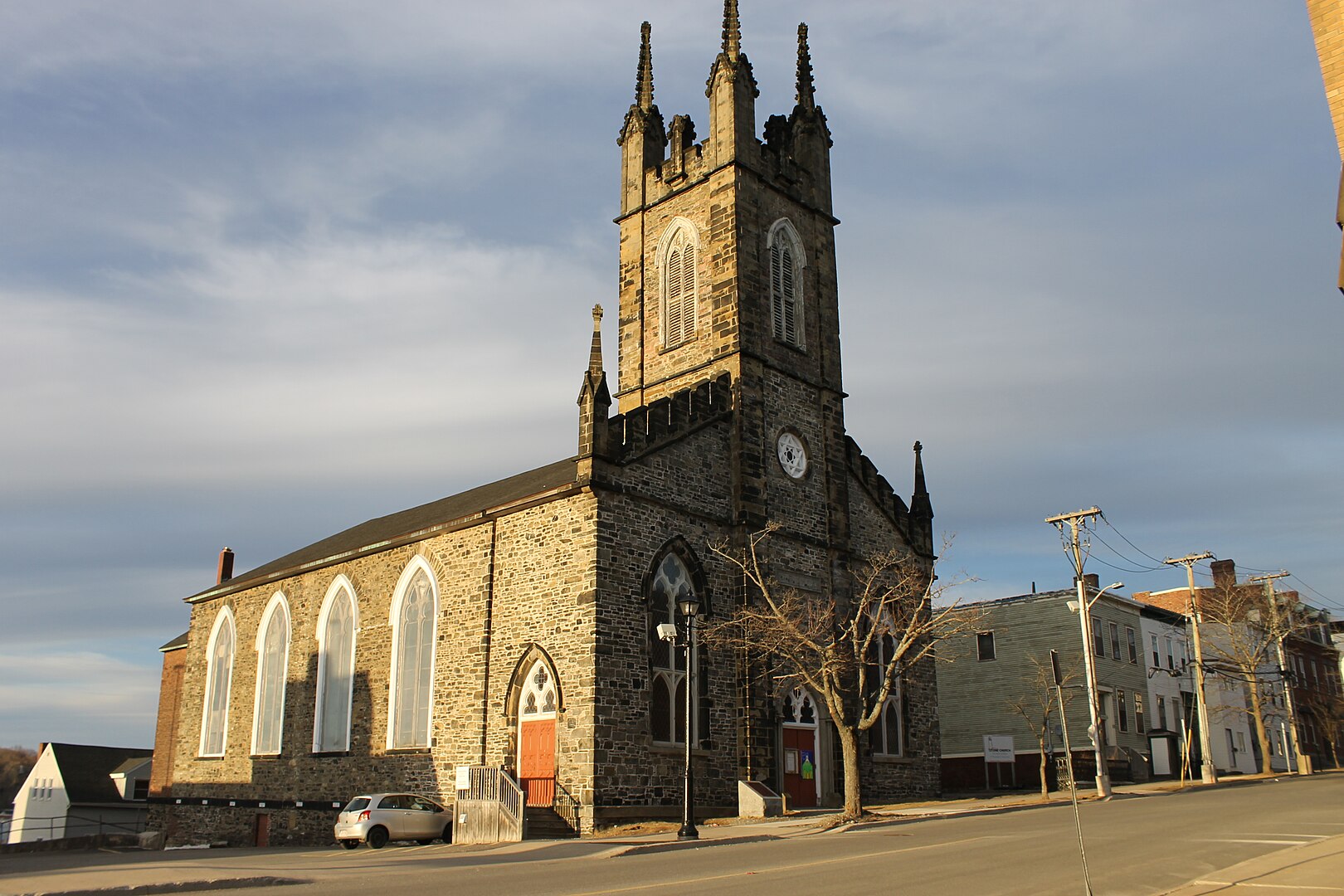
Trinity Church
Kingston Parish, 1789
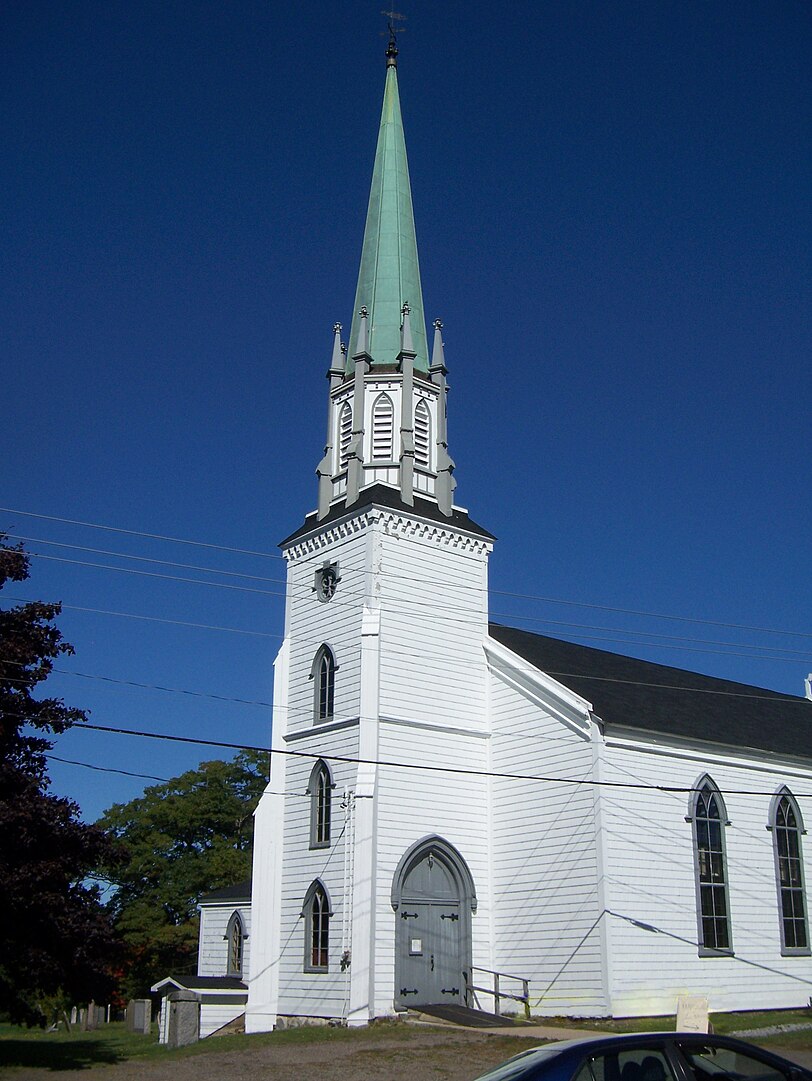
Discover Urban Charm in Viscount Alexander Park: Exceptional Ottawa Condos for Sale
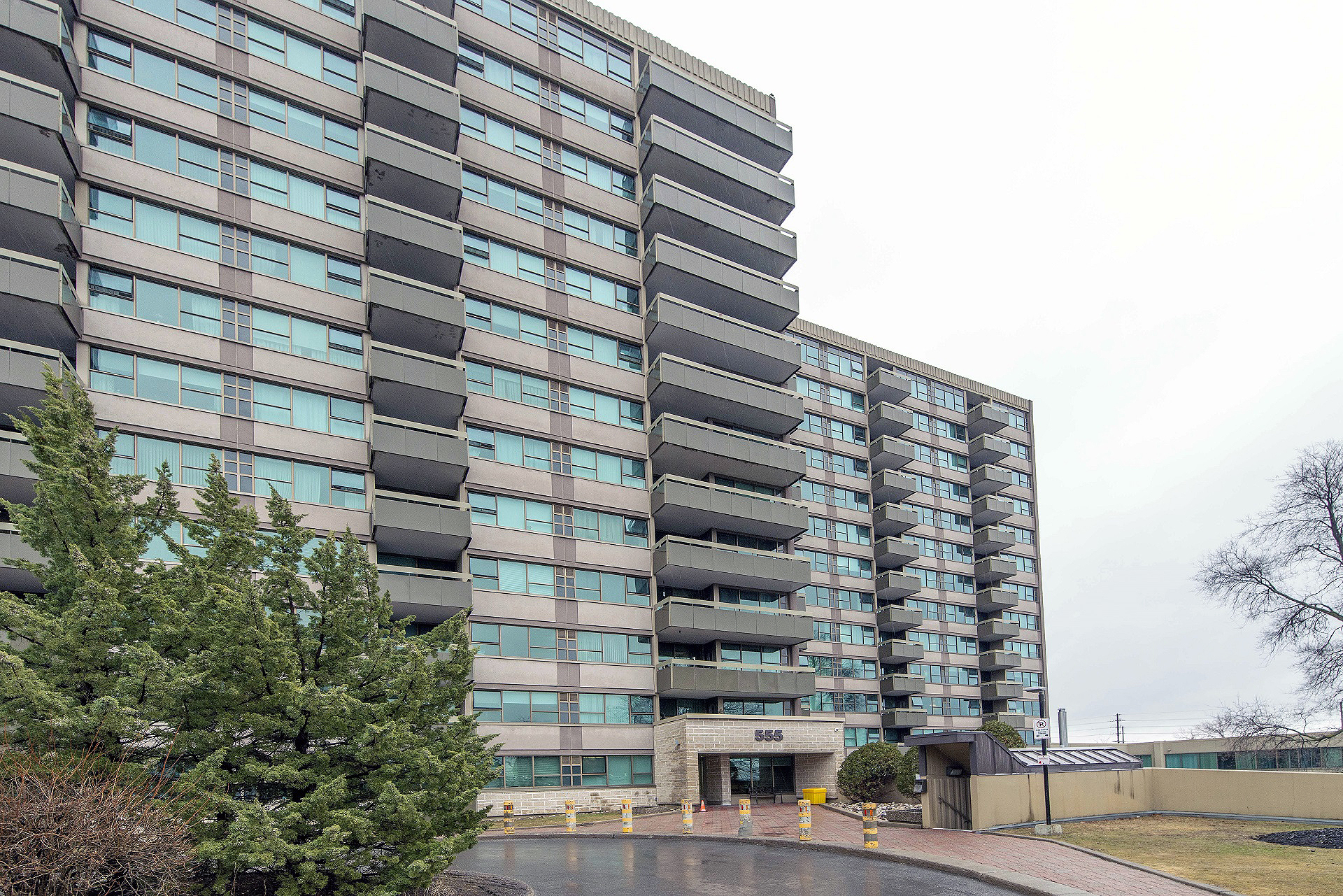
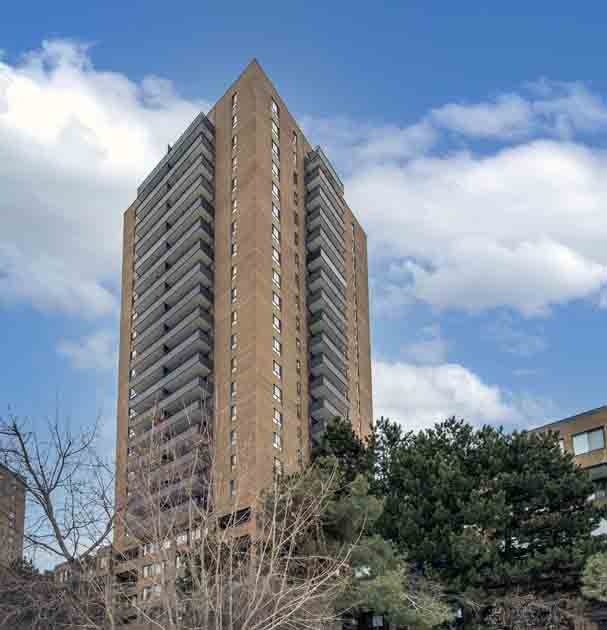
Ottawa’s condo market is thriving, offering incredible opportunities for both buyers and investors. Today, we’re spotlighting two outstanding units located in one of Ottawa’s most desirable area: Viscount Alexander Park. These condos offer prime locations, modern amenities, and stunning features that make them ideal for city living.
Explore Viscount Alexander: 1909 – 515 St Laurent Boulevard & 814-555 Brittany Drive
Nestled in the heart of Viscount Alexander Park, 1909 – 515 St Laurent Boulevard and 814-555 Brittany Drive present a fantastic chance to enjoy Ottawa’s serene suburban charm while staying close to the city’s vibrant core.
- 1909 – 515 St Laurent Boulevard: This high-rise unit boasts breathtaking city views and is conveniently located near parks, shopping centers, and easy transit options. Perfect for professionals and families alike, it provides a spacious layout and plenty of natural light, ideal for those seeking an airy, comfortable living space.
- 814 – 555 Brittany Drive: Situated in a well-maintained complex, this unit combines comfort with convenience. It’s steps from popular amenities, including schools, restaurants, and recreational facilities, and offers residents an inviting community atmosphere. This unit is a top pick for anyone who values accessibility and a vibrant neighborhood.
Why Choose Ottawa Condos in Viscount Alexander?
Owning a condo in Ottawa means enjoying a dynamic mix of urban convenience and community charm. Viscount Alexander Park offers proximity to Ottawa’s cultural hubs, excellent schools, healthcare, and beautiful green spaces, making this area highly desirable for buyers. Plus, with modern amenities, secure buildings, and easy access to the city center, these condos cater to a wide range of lifestyles.
Ready to find your next home or investment? Reach out today to schedule a viewing of these fantastic condos in Viscount Alexander Park — and discover your dream condo in the heart of Ottawa!
Real Estate News – October 28, 2024

Forum Asset Management’s Acquisition of Alignvest Student Housing REIT’s Portfolio
Forum Asset Management’s Real Estate Income and Impact Fund (REIIF) has agreed to acquire Alignvest Student Housing Real Estate Investment Trust’s (REIT) portfolio for $1.686 billion. This acquisition will make REIIF the leading owner of purpose-built student accommodations (PBSA) in Canada, managing nearly 10,500 beds. The deal is expected to close by the end of 20241. This move will help address the growing need for high-quality student housing in supply-constrained markets across Canada.
CREA’s 39th PAC Days in Ottawa
The Canadian Real Estate Association (CREA) held its 39th Political Action Committee (PAC) Days in Ottawa from October 20-22, 20242. Over 450 REALTORS® from across Canada met with more than 120 Members of Parliament to advocate for policies that encourage access to housing for all Canadians. Key issues included establishing a national housing roundtable, leveraging infrastructure funding, and developing a housing workforce immigration strategy.
Competition Bureau’s Property Controls in the Grocery Industry
The Competition Bureau has been focusing on property controls within the grocery industry to ensure fair competition and prevent monopolistic practices5. This involves monitoring and regulating the ownership and operation of grocery stores to maintain a competitive market, which benefits consumers by keeping prices fair and ensuring a variety of choices.
Ottawa Condo Market: Navigating the Latest Mortgage Rate Drop

The recent mortgage rate drop by the Bank of Canada has sparked significant interest and activity in the Ottawa condo market. As a REALTOR® specializing in condominiums, it’s essential to understand these shifts and what they mean for both buyers and sellers.
Increased Buyer Interest:
Following the rate cut, there’s been a notable uptick in buying interest, particularly among first-time homebuyers and investors. Lower borrowing costs have made mortgages more accessible, encouraging more people to explore condo ownership.
Price Adjustments:
The average selling price of a condo in Ottawa was $414,200 in September 2024, marking a slight decrease of 0.6% compared to the previous month. While prices have decreased by 1.3% year-over-year, the recent rate drop has the potential to stabilize prices and even drive them upwards as demand increases.
Market Dynamics:
The condo market is showing signs of increased activity, but it’s still early days. Some buyers remain cautious, waiting to see if prices will stabilize further. However, the general trend indicates a more dynamic market with potential for growth.
Dwindling Inventory:
One of the challenges in the Ottawa condo market is the dwindling inventory. As more buyers enter the market, the competition for available units intensifies. This could lead to quicker sales and potentially higher prices for well-located and well-maintained condos.
Opportunities for Sellers:
For condo owners looking to sell, now might be an opportune time. The increased buyer interest and lower mortgage rates create a favorable environment for sellers to list their properties and potentially achieve better prices.
Tips for Buyers:
- Act Quickly: With increasing competition, it’s crucial to act quickly when you find a condo that meets your needs.
- Get Pre-Approved: Ensure you’re pre-approved for a mortgage to streamline the buying process and strengthen your position when making offers.
- Work with a REALTOR®: A knowledgeable REALTOR® can help you navigate the competitive market and find the best deals.
Conclusion:
The recent mortgage rate drop has brought renewed energy to the Ottawa condo market. As a REALTOR® focused on this sector, staying informed and prepared can help you seize the opportunities this dynamic market presents.
CREA / Canadian Real Estate Assocation – Monthly Housing Market Report

Canadian Home Sales Edge Up Again Following Third Interest Rate Cut
The Canadian Real Estate Association’s (CREA) October 15, 2024, Monthly Housing Market Report presents an interesting snapshot of a market responding to recent economic shifts, particularly the Bank of Canada’s series of interest rate cuts. With the most recent of these rate reductions in September, Canadian home sales continued to rise, gaining 1.9% month-over-month, marking the third consecutive increase following rate cuts. Although these gains may not be dramatic, they point to a consistent pattern in recent months that could indicate a stable upward trend, albeit slower than some may expect. This trend reflects the potential for an active housing market next year, as many buyers may hold off for anticipated further cuts in early 2025.
Market Dynamics and Regional Highlights
Regionally, the Greater Toronto Area and Hamilton-Burlington, Montreal, Quebec City, and the West Coast (Vancouver and Victoria) were leaders in sales growth. This regional distribution underlines the diversity in Canada’s housing market, where economic resilience, demand, and inventory availability vary. For example, while Ontario cities lead the charge, regions like Quebec City also see momentum, reflecting local factors that draw buyers despite broader economic trends.
Inventory and Supply
New listings saw a significant 4.9% increase month-over-month in September, leading to the availability of 185,427 active listings, a year-over-year jump of 16.8% yet still below Canada’s historic average of 200,000 listings. This increase in inventory could signal a balanced market, especially with a sales-to-new-listings ratio easing to 51.3%, close to the balanced range of 45-65%. Buyers may find more choices than in previous months, as sellers are motivated to list before the traditionally slower winter months.
Prices: Steady but Uneven
Price stability is a central theme in CREA’s report, with the MLS® Home Price Index (HPI) ticking up just 0.1% from August to September, though it remains 3.3% below levels from the previous year. The report notes a minor year-over-year gain in the national average sale price, up 2.1%. Nationally, housing prices have shown a flat trajectory through 2024 despite minor month-to-month adjustments, indicating that sellers are likely holding steady in their price expectations in response to demand from rate-driven buyers. This relatively flat pricing may appeal to prospective buyers aiming to enter the market before any dramatic economic shifts.
Outlook and Considerations for Buyers and Sellers
The fall and winter months could bring interesting dynamics to the market, especially with possible further rate cuts on the horizon. CREA notes that these reductions could positively impact the 2025 market, as buyers who may delay their purchase now could drive demand early next year. As James Mabey, CREA’s Chair, emphasizes, fall is an ideal time for buyers to engage with a REALTOR® and strategize, given the diverse economic signals at play and the increase in inventory.
This CREA report provides a positive outlook for the Canadian real estate market, with favorable conditions for both buyers and sellers. The increased supply and manageable prices create an environment for potential long-term growth.
Discover Exceptional Condo Living in Ottawa: Viscount Alexander & West Centre Town Gems
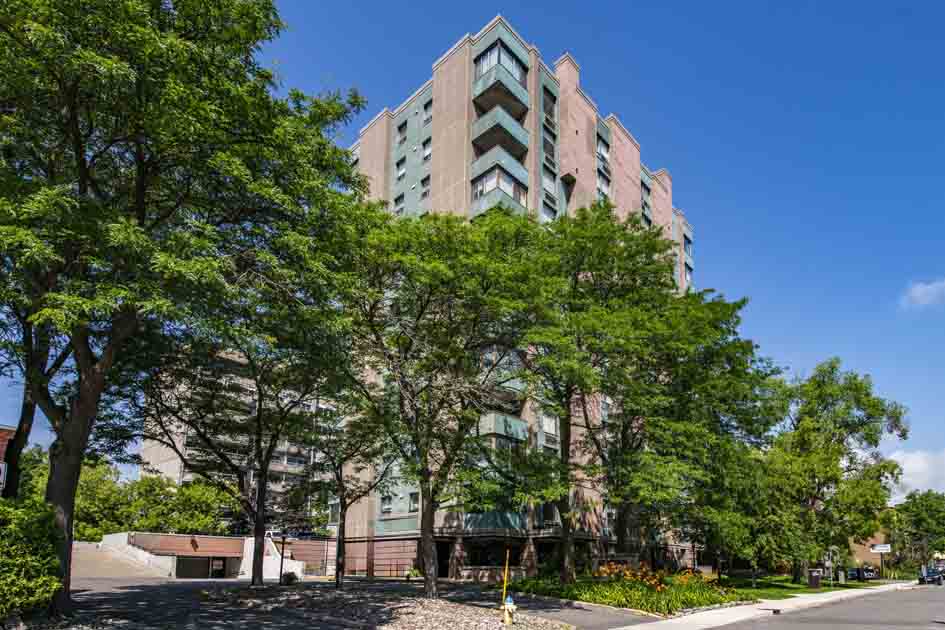


Ottawa’s condo market is thriving, offering incredible opportunities for both buyers and investors. Today, we’re spotlighting six outstanding units located in two of Ottawa’s most desirable areas: Viscount Alexander Park and West Centre Town. These condos offer prime locations, modern amenities, and stunning features that make them ideal for city living.
Explore Viscount Alexander: 1909 – 515 St Laurent Boulevard & 814-555 Brittany Drive
Nestled in the heart of Viscount Alexander Park, 1909 – 515 St Laurent Boulevard and 814-555 Brittany Drive present a fantastic chance to enjoy Ottawa’s serene suburban charm while staying close to the city’s vibrant core.
- 1909 – 515 St Laurent Boulevard: This high-rise unit boasts breathtaking city views and is conveniently located near parks, shopping centers, and easy transit options. Perfect for professionals and families alike, it provides a spacious layout and plenty of natural light, ideal for those seeking an airy, comfortable living space.
- 814 – 555 Brittany Drive: Situated in a well-maintained complex, this unit combines comfort with convenience. It’s steps from popular amenities, including schools, restaurants, and recreational facilities, and offers residents an inviting community atmosphere. This unit is a top pick for anyone who values accessibility and a vibrant neighborhood.
Embrace Urban Living in West Centre Town: 40 Arthur Street Units 204, 304, 404 & 1101
West Centre Town is one of Ottawa’s most dynamic neighborhoods, where residents enjoy a bustling mix of urban conveniences, boutique shops, and green spaces. The 40 Arthur Street condos provide a blend of luxury and comfort in a highly sought-after area.
- 204 – 40 Arthur: This 2nd-floor condo offers easy access to all building amenities, perfect for busy professionals who want the convenience of city living without sacrificing privacy.
- 304 – 40 Arthur: On the 3rd floor, this unit features a well-designed floor plan with large windows, providing ample sunlight throughout the day. It’s ideal for those who love a bright, open space.
- 404 – 40 Arthur: This 4th-floor unit is all about elegance and modern design. With proximity to popular spots like the Ottawa River pathways, it’s a superb choice for those wanting to stay connected to the pulse of the city.
- 1101 – 40 Arthur: Located on the 11th floor, this premium unit offers stunning panoramic views of West Centre Town and beyond including the Ottawa River and the Gatineau Hills. It’s perfect for homeowners or investors looking for a luxurious, well-situated property in one of Ottawa’s most exciting areas.
Why Choose Ottawa Condos in Viscount Alexander and West Centre Town?
Owning a condo in Ottawa means enjoying a dynamic mix of urban convenience and community charm. Both Viscount Alexander Park and West Centre Town offer proximity to Ottawa’s cultural hubs, excellent schools, healthcare, and beautiful green spaces, making these areas highly desirable for buyers. Plus, with modern amenities, secure buildings, and easy access to the city center, these condos cater to a wide range of lifestyles.
Ready to find your next home or investment? Reach out today to schedule a viewing of these fantastic condos in Viscount Alexander Park and West Centre Town — and discover your dream condo in the heart of Ottawa!
Most recent mortgage rate reduction

How will most recent mortgage rate reduction affect real estate
The recent mortgage rate reduction can have several impacts on the real estate market, particularly for buyers, sellers, and investors. Here’s how it may affect real estate:
- Increased Buyer Demand: Lower mortgage rates reduce the cost of borrowing, making it more affordable for buyers to take out home loans. This can lead to a surge in demand, particularly from first-time buyers or those who were previously priced out of the market. More buyers competing for properties can push up home prices, especially in popular areas.
- Refinancing Surge: Homeowners with existing mortgages might take advantage of lower rates to refinance their loans, reducing their monthly payments. This can increase disposable income for homeowners, which could be reinvested in home renovations or other areas of the economy.
- Improved Affordability: Lower rates can improve housing affordability, as lower monthly payments enable buyers to stretch their budgets. However, if increased demand drives up prices, affordability could be offset by higher home prices in competitive markets.
- Sellers’ Market Potential: If the rate cut stimulates demand, sellers may find themselves in a stronger position with more prospective buyers vying for their homes. This could lead to faster sales and potentially higher sale prices, depending on the supply in the market.
- Impact on Investors: For real estate investors, lower rates make financing more attractive, allowing for cheaper borrowing costs and potentially better returns on rental properties or developments. However, the increase in property prices due to heightened demand could reduce profit margins in certain areas.
- Shift in Market Segments: Lower rates could lead to increased activity in certain segments, such as condos or entry-level homes, where affordability is a critical factor. Buyers who were focused on renting might shift toward homeownership as mortgage payments become more comparable to rent prices.
Overall, the impact of a mortgage rate reduction typically stimulates real estate activity, but the full effect depends on other factors like the local housing supply, economic conditions, and market confidence. For a realtor like yourself, Claude, this presents an opportunity to help clients understand how the rate cut can benefit them, either through purchasing, refinancing, or selling at the right time.
What is the reaction to the latest mortgage rate drop
The reaction to the most recent mortgage rate drop has been generally positive but with some cautious optimism. For buyers, the lower rates make borrowing more affordable, potentially bringing some off the sidelines who had been waiting for better conditions. However, experts suggest that many buyers might still wait until the end of the year to see if further cuts are coming, which could lower rates even more.
The reduction is expected to lead to increased buyer demand, which could push home prices up again, particularly in areas where inventory remains tight. While affordability improves due to lower borrowing costs, the limited supply of homes for sale may still keep prices high. For homeowners, the rate cuts also offer some relief, particularly for those looking to refinance, though the conditions for refinancing are still not ideal for everyone.
In the Canadian market, experts predict that we might see a busier-than-usual winter real estate season as buyers rush to take advantage of better rates before prices increase further.
Architecture – Canadian Architecture – Gothic Revival – Prince Edward Island / Newfoundland & Labrador

Holy Redeemer Anglican Church
Spaniards Bay, 1891
Gothic Revival architecture in Newfoundland and Labrador and Prince Edward Island is a distinct reflection of the broader Gothic Revival movement that swept across Canada during the 19th and early 20th centuries. This style, which took inspiration from medieval Gothic architecture, is characterized by pointed arches, steep gables, decorative tracery, and a general emphasis on verticality, all meant to evoke a sense of grandeur and spiritual elevation.
Newfoundland and Labrador:
In Newfoundland and Labrador, Gothic Revival architecture is most commonly seen in the region’s churches. Many of these were built during the 19th century when there was a wave of religious building projects, particularly in Anglican and Roman Catholic communities. One prominent example is St. John the Baptist Anglican Cathedral in St. John’s, which began construction in 1847. Designed by George Gilbert Scott, an English architect known for his work on Gothic Revival churches, the cathedral features many of the typical elements of the style: pointed arches, ribbed vaults, and lancet windows.
The use of Gothic Revival in Newfoundland was closely tied to its maritime history and the influence of British colonialism. Churches were often built by shipbuilders and craftsmen who applied their skills to woodworking and stone masonry, creating structures that are both functional and artistically detailed. The use of local materials, like wood in many rural churches, gives Newfoundland’s Gothic Revival buildings a unique regional flavor.
Prince Edward Island:
In Prince Edward Island, Gothic Revival architecture also found its primary expression in religious buildings. The Basilica of St. Dunstan in Charlottetown is a striking example. Built between 1896 and 1907 after a fire destroyed the earlier church, it is noted for its twin spires, flying buttresses, and stained-glass windows, all hallmarks of the Gothic Revival style. The basilica is a dominant feature of Charlottetown’s skyline and is considered one of the most significant examples of this architectural style on the island.
Many smaller churches across PEI also adopted Gothic Revival elements, especially in rural communities where the style was seen as a connection to larger, global religious movements. These buildings are often characterized by their wooden construction, steeply pitched roofs, and simple yet elegant design, reflecting the modest resources of the island’s communities at the time.
Significance:
In both provinces, Gothic Revival architecture was a way for communities to express their religious devotion, while also showcasing craftsmanship and regional adaptations of a global architectural style. While larger stone cathedrals are found in major towns and cities, rural areas often feature more modest wooden churches that still retain Gothic elements like pointed windows and detailed woodwork.
This style remains an important part of the architectural heritage of Newfoundland and Labrador and Prince Edward Island, with many Gothic Revival buildings continuing to serve religious and community functions today.
Newfoundland and Labrador
Cathedral of Immaculate Conception
Harbour Grace, 1892

Cathedral of St John the Baptist
St John’s, 1847
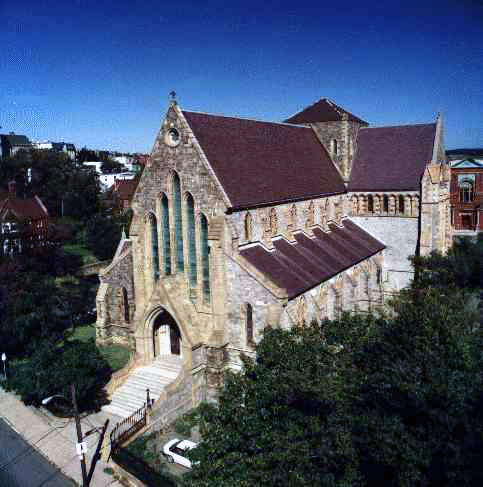
Holy Trinity Convent and Chapel
Witless Bay, 1890

Immaculate Conception Church
Cape Broyle, 1947

St Patrick’s Church
Carboneau, 1891

St-Patrick’s Church
St-John’s, 1855

St-Patrick’s Church
Woody Bay, 1875
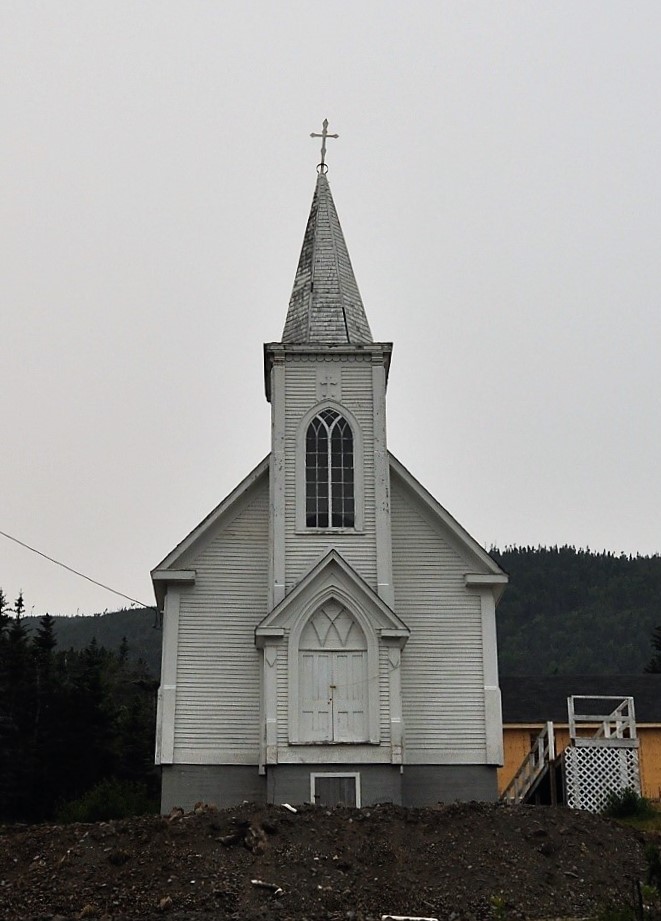
St-Paul’s Church
Harbour Grace, 1837

St-Peter’s Church
Twillingate, 1845

St-Thonas’s Church
St-John’s, 1836

Prince Edward Island
Gordon Memorial United Church
Alberton, 1857
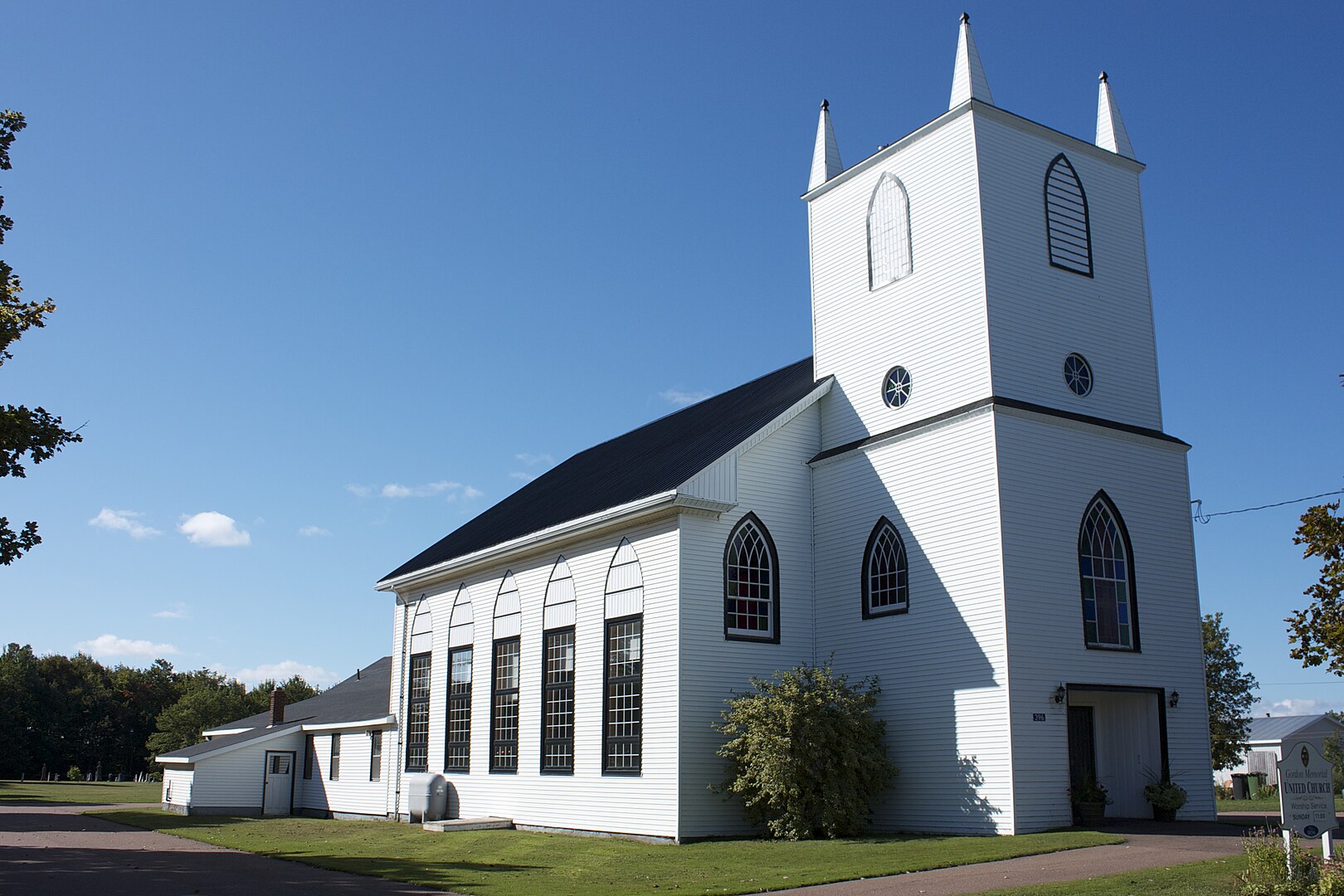
Immaculate Conception Church
Prince County, 1892

St-Brigid’s Church
Foxley River, 1873

St-Bunstans Basilica
Charlottetown, 1916

St-John’s Presbyterian Church
Belfast, 1824

St-John’s the Baptist Church
Miscouche, 1892

St-Mary’s Roman Catholic Church
Indian River, 1902

St Patrick’s Roman Catholic Church
Prince County, 1890

St-Peter’s Cathedral
Charlottetown, 1869

St-Simon St Jude
Tignish, 1860

- « Previous Page
- 1
- …
- 6
- 7
- 8
- 9
- 10
- …
- 50
- Next Page »

